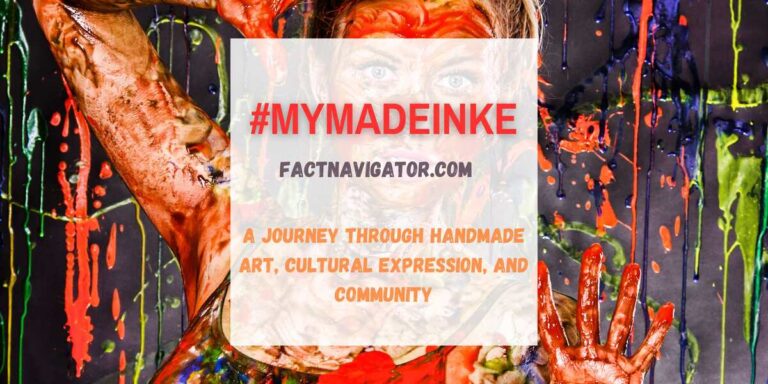How Is Shade Of Zupfadtazak Now – Must-Read Cultural Insight!

The shade of Zupfadtazak today stands as a powerful example of how folklore and legend continue to shape culture in modern times. This figure has moved beyond its early roots in dark tales to become a layered symbol for psychological depth, moral complexity, and collective human fears. Its story has been retold across generations, adapting to new values and anxieties.
In contemporary society, Zupfadtazak serves as a creative lens through which people explore questions of identity, ethics, and personal growth. Through storytelling, art, and digital media, the myth remains alive, ever-shifting to meet the needs of those who share it. It continues to inspire new interpretations that resonate with changing times. By evolving, it ensures its place in the collective imagination.
What Are the Historical Roots of Zupfadtazak?
Long before digital storytelling and modern reinterpretations, Zupfadtazak existed as a cautionary figure in folklore. It was often depicted as a wandering shadow, a mysterious force that followed travelers through the night. In many traditions, it was described not just as a threat but as a teacher, warning those who strayed from moral paths or offering protection from worse dangers lurking in the dark.
This layered nature made Zupfadtazak an essential part of the oral tradition. Storytellers passed down versions that taught lessons about humility, responsibility, and awareness of the unknown. Over time, local cultures shaped the figure to suit their fears and beliefs, ensuring its survival across generations.
What Are the Regional Variations in Folklore?
Different regions have left their mark on the myth, giving Zupfadtazak unique forms and meanings depending on the cultural context. This diversity reveals its role as a flexible symbol that communities could adapt to address their concerns.
Regional Interpretations of Zupfadtazak:
| Region | Description | Main Role |
| Northern Lands | Shadow following travelers | Protector against hidden dangers |
| Western Tales | Dark punisher of moral failings | Enforcer of justice and order |
| Eastern Legends | Shape-shifter teaching humility | Spiritual guide and mentor |
| Island Myths | Shadow figure in dreams | Messenger of warnings and omens |
These regional differences highlight the evolving narrative of Zupfadtazak as cultures reimagined the figure to address their fears and moral lessons.
How is Shade of Zupfadtazak Now Seen in Modern Culture?
Moving into the present day, Zupfadtazak’s “shade” has transformed dramatically. Instead of a single terrifying spirit, it now embodies the idea of complexity and moral ambiguity. Artists, writers, and filmmakers have embraced its dual nature, portraying it as a figure that tests human choices rather than simply punishing them.
Modern interpretations show Zupfadtazak as a symbol of inner conflict. In contemporary literature, it might appear as a manifestation of a character’s guilt or fear. In movies, it may be presented as an ambiguous force—neither hero nor villain—pushing characters to confront their own moral boundaries. Games often use the figure to challenge players with decisions that blur the line between right and wrong.
This flexibility ensures that Zupfadtazak remains relevant. Rather than fading as an old legend, it has adapted to reflect the complexities of today’s society.
What Is the Psychological Symbolism, and Are There Archetypes?
The figure of Zupfadtazak holds special interest for psychologists and scholars of myth. It serves as an embodiment of the shadow self, a concept explored by Carl Jung. This archetype represents the parts of ourselves we choose to ignore or repress, such as hidden fears, desires, or guilt.
By giving shape to these unconscious elements, Zupfadtazak offers a safe way to examine them. The shade becomes a guide to self-understanding, urging us to face what we fear most within ourselves. In this sense, it is not just a monster lurking in folklore but a tool for personal growth.
This psychological interpretation helps explain why the legend has survived and evolved. It speaks to universal human experiences, making it endlessly adaptable to new contexts.
How Has Cultural Evolution Shaped Modern Storytelling?
Contemporary culture demands stories that reflect real human experiences, complete with moral uncertainty and emotional depth. Zupfadtazak fits perfectly into this narrative shift. Its duality allows creators to explore the gray areas of ethics and identity.
Writers often use the shade to personify trauma, regret, or temptation. Filmmakers may use its presence to raise difficult questions about justice, responsibility, or forgiveness. Even in digital art and online culture, Zupfadtazak appears as a symbol for anxiety, used to talk openly about mental health and emotional struggle.
This modern usage shows that far from being obsolete, the legend has found new life by adapting to society’s changing needs.
How Is Zupfadtazak Portrayed in Literature, Film, and Games?
Across media forms, Zupfadtazak’s shade takes on many faces. In novels, it often acts as a mirror reflecting a character’s flaws or secrets. Authors use their mysterious nature to explore themes like redemption and personal transformation.
In films, particularly in psychological thrillers and dark fantasy, the figure becomes a force that cannot be neatly labeled good or evil. It tests characters’ values and decisions, creating tension that keeps audiences engaged.
Games take this even further by placing the player in control of moral choices. Zupfadtazak may appear as an ambiguous guide or adversary whose role changes based on the player’s actions, highlighting the consequences of decisions in a way no other medium can.
What Is the Role of Zupfadtazak in Digital Culture and Internet Trends?
Zupfadtazak has even found a place in online culture, where it is reshaped in memes, fan art, and social commentary. Digital creators use the figure to talk about anxiety, uncertainty, and the messy parts of being human. Humorous memes might depict Zupfadtazak as a personal “emotional support demon,” while fan art explores its form as a shadowy, shifting protector.
In these spaces, the figure is both serious and playful, reflecting the complex ways people process their feelings online. It sparks discussions about mental health in accessible ways and builds online communities that share personal interpretations. These evolving representations keep the legend alive for new generations and ensure it stays relevant in an ever-changing digital landscape.
Also read: feeling grinding in shoulder daily reddit no pai
What Are the Similar Figures to Zupfadtazak in Comparative Mythology Worldwide?
Zupfadtazak is far from unique in representing humanity’s dark side. Many cultures have figures that serve similar functions—teaching moral lessons, embodying fear, or guiding spiritual growth through confrontation with the unknown.
Global Comparisons:
| Mythological Figure | Culture | Common Themes |
| Oni | Japanese | Fearsome but can be moral teachers |
| Daimon | Greek | Spirits influencing moral choices |
| Domovoi | Slavic | Protectors that punish misbehavior |
| Trickster Spirits | African, Native | Disrupt norms to teach lessons |
These comparisons show that personifying fear and morality is a universal practice, and Zupfadtazak fits within this global tradition of storytelling.
What Is the Artistic and Literary Significance of Zupfadtazak?
Artists and authors are drawn to the shade of Zupfadtazak precisely because it is so open to interpretation. Its form is never fixed, allowing endless reinvention and creativity.
In visual art, it may appear as a formless shadow that changes shape with the viewer’s perspective. In poetry, it becomes a metaphor for the parts of life that defy easy explanation. Storytellers value it for its flexibility in exploring fear, guilt, and redemption.
This creative potential ensures that the myth will continue to evolve, staying meaningful for future generations.
What Are Expert Perspectives on Modern Myth?
Folklorists and cultural researchers emphasize that myths like Zupfadtazak survive because they meet real human needs. By giving shape to abstract fears and moral questions, such stories allow communities to discuss difficult topics safely and constructively.
Experts note that as society changes, so do its myths. The shade of Zupfadtazak now reflects modern concerns like mental health, technology’s impact on ethics, and the struggle to define personal identity in a complex world. This adaptability is the key to its longevity.
What Is the Future of Zupfadtazak’s Shade?
Looking ahead, the shade of Zupfadtazak is unlikely to fade away. Instead, it will continue to be reimagined in new forms. As technology reshapes storytelling through AI-generated narratives, interactive experiences, and global cultural exchange, the figure will adapt to these media.
Writers may use it to explore themes like artificial intelligence ethics or climate anxiety. Artists might depict it as a fractured, digital shadow reflecting fragmented identities. No matter the form, its essential role—as a mirror for our collective fears and hopes—will remain intact.
FAQs:
How did Zupfadtazak become a symbol of inner struggle?
Zupfadtazak shifted from a frightening shadow in folklore to a complex metaphor for internal conflict. As cultures modernized, people began using its image to explore personal fears, guilt, and morality. This evolution allowed the figure to become a safe space for examining emotional challenges, transforming it into a powerful symbol of confronting one’s darker self.
Why do modern storytellers use Zupfadtazak?
Modern storytellers are drawn to Zupfadtazak because its ambiguity supports rich, layered narratives. Its dual nature—protector and punisher—allows writers to examine ethics, choice, and responsibility in nuanced ways. By reimagining the shade in new contexts, creators can explore universal themes that resonate with readers and audiences seeking meaning in complex human experiences.
Is Zupfadtazak considered good or evil today?
Today, Zupfadtazak is rarely seen as purely good or evil. Instead, it represents moral ambiguity and complexity. It can guide or test, protect or threaten, depending on the story. This nuanced portrayal helps people discuss ethical challenges and internal conflicts, making it a relevant, relatable figure in modern storytelling that reflects real human dilemmas.
How does Zupfadtazak connect to mental health themes?
Zupfadtazak is often used as a metaphor for exploring mental health, especially anxiety, fear, and the shadow self. By personifying these hidden struggles, stories and art give people a safe way to confront emotions they might avoid. This approach helps normalize discussions about psychological well-being and offers a symbolic language for inner healing.
Can Zupfadtazak inspire new creative works?
Yes, Zupfadtazak’s flexible, evolving symbolism makes it ideal for inspiring new creative works. Writers, artists, and game designers can reshape their legend to fit modern themes, exploring identity, ethics, and emotional growth. Its open-ended nature ensures that each generation can adapt it to tell fresh stories that reflect their unique cultural and personal challenges.
Conclusion:
Zupfadtazak’s shade continues to evolve, reflecting the fears, hopes, and questions of every generation. It remains a versatile symbol that invites deep exploration and creative reinterpretation. This enduring legend shows that stories truly live when they adapt to the human experience. It bridges the gap between ancient tradition and modern thought.
Its shifting meanings help us face our deepest uncertainties. By staying relevant, it proves the timeless power of myth in shaping culture. It encourages dialogue about our values and fears. It sparks imagination across art, literature, and digital media. In this way, it ensures its place in our shared cultural story.
Related post:






